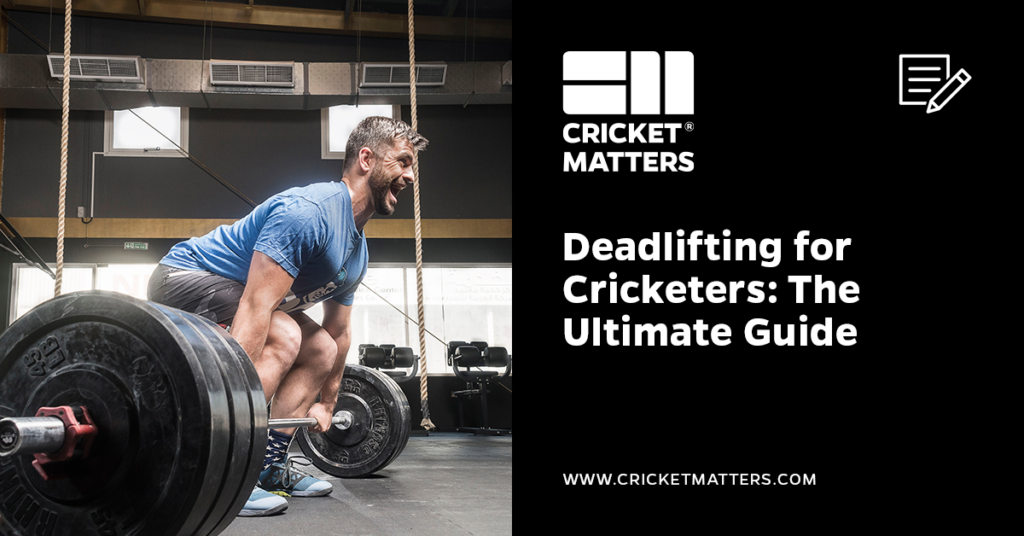
I hope you enjoy reading this blog post.
James Breese, Cricket Matters FounderIf you need my help with cricket coaching, strength and conditioning, injury rehab, or nutrition, click here.
Unfortunately, not all cricketers have access to a gym, so a complete strength and conditioning programme can often be overlooked and not included in their training.
However, it doesn’t mean you can’t do something. Something is better than nothing.
With that in mind, I want to share our “ultimate” home workout for cricketers.
This is the exact workout we’ve given some cricketing athletes who want to train from home and have minimal equipment.
After reading this article, a lack of gym access will no longer be an excuse for cricketers who want to perform better.
You’ll learn how to become a stronger and more explosive cricketer!
Let’s dive right in.
Table of Contents
Recommended Equipment
A few key pieces of equipment would help cricketers get the most out of their ultimate home workout.
While you can adapt many exercises to be bodyweight-only, having these items on hand will enable you to tailor your training to your specific needs and cricket position:
- Foam Roller:
Essential for your warm-up, a foam roller helps loosen tight muscles and improve mobility. Roll over your quads, hamstrings, adductors, lower back, and thoracic spine before you begin the main exercises. - Kettlebells or Dumbbells:
Ideal for unilateral (single-arm or single-leg) training, kettlebells and dumbbells provide resistance for power-based lifts, such as the dumbbell suitcase jumps or single-leg Romanian deadlifts (RDLs). - Medicine Ball:
Perfect for explosive exercises like overhead slams and rotational throws, which develop the core strength and power required for cricket. - Low Plyometric Box (6-12 inches):
A low plyometric box is helpful for box jumps and improves jumping ability, agility, and coordination. - Resistance Bands:
Various resistance bands are excellent for activation exercises like resisting dead bugs and floor slides with breathing. - TRX or Suspension Trainer:
Ideal for bodyweight-based pulling movements like TRX Rows, suspension trainers offer a versatile way to build upper-body strength. - Cones or Markers:
Set up cones 22 yards apart to work on sprint acceleration, deceleration, and agility, essential for conditioning exercises like tempo runs. - Swiss Ball:
Provides support and instability to make exercises like band rotations more challenging and improve core stability.
This equipment will improve the quality of your workouts, allowing you to optimize your training programme and address cricket-specific movement patterns.
Workout Overview
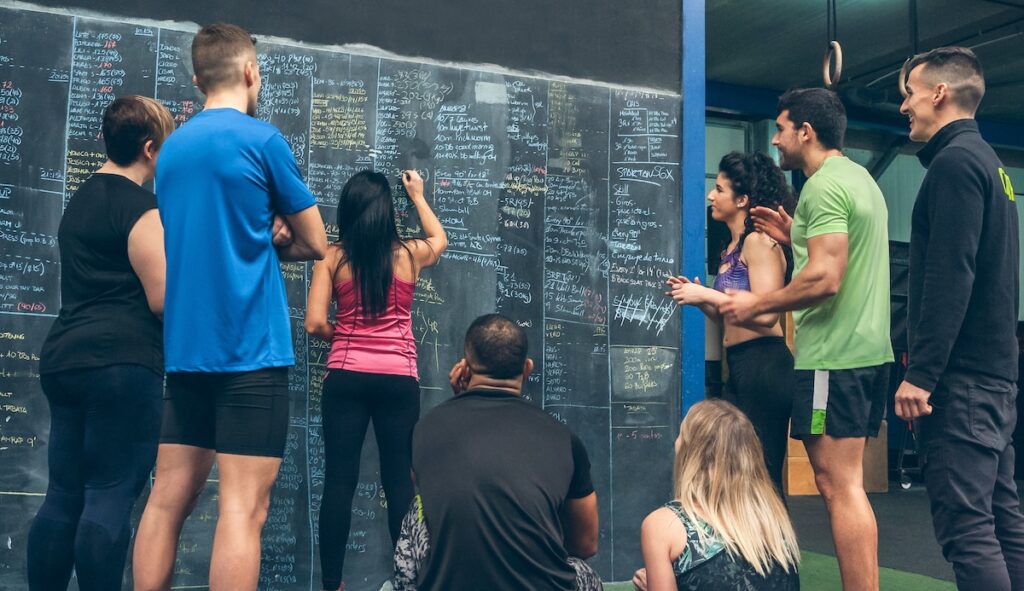
The Ultimate Home Workout for Cricketers
For those who wish to see the whole workout or save it for future use so they can use in the future, I’ve created a quick table below.
For more detailed instructions on each exercise and how to perform it, please continue to read the whole article.
| Exercise | Sets | Reps | Rest | |
| Foam Roll | Quads, Hamstrings, Adductors, Low Back, T-Spine Roll Overhead | 1 | 30 Seconds per Area | No Rest |
| Dynamic Warm Up | Resisted Rocking W/Neck Mobility, V Stance T-Spine Rotation, Lizard Lunge Overhead Hip Opener, Glute Bridge: 3 reps w/5 secs hard exhale as you bridge | 1 | 30 Seconds per Area | No Rest |
| Activation | Floor Slide W/Breathing, Band Resisted Dead Bugs, KB Shin Box | 1 | 3 – 5 Reps per exercise | No Rest |
| Power Work | Box Jump or Jump Squat, Med Ball Overhead Slams | 3 of each | See Description | 2 – 5 minutes |
| Sprint Work | Sprints: 10 Meter Dash | 1 | 3 | Full Recovery |
| Strength Superset #1 | Dumbbell Suitcase Jumps and Side Plank Rotations | 3 | See Description | 60 seconds |
| Strength Superset #2 | Counter Balance Skater Squats and TRX Rows | 3 | See Description | 60 Seconds |
| Strength Tri-Superset | Dumbbell Single Leg RDL, Press Up, and Swiss Ball Band Rotations | 3 | See Descriptions | 60 Seconds |
| Conditioning | 22-Yard Tempo Runs | 1 | 8 – 10 Minutes | N/A |
| The Cool Down | Diaphragmatic Breathing, Standing Hamstring Stretch, Child’s Pose with Side Stretch | 1 | 2 Minutes Each Position | N/A |
The Warm-Up
Start with Foam Rolling
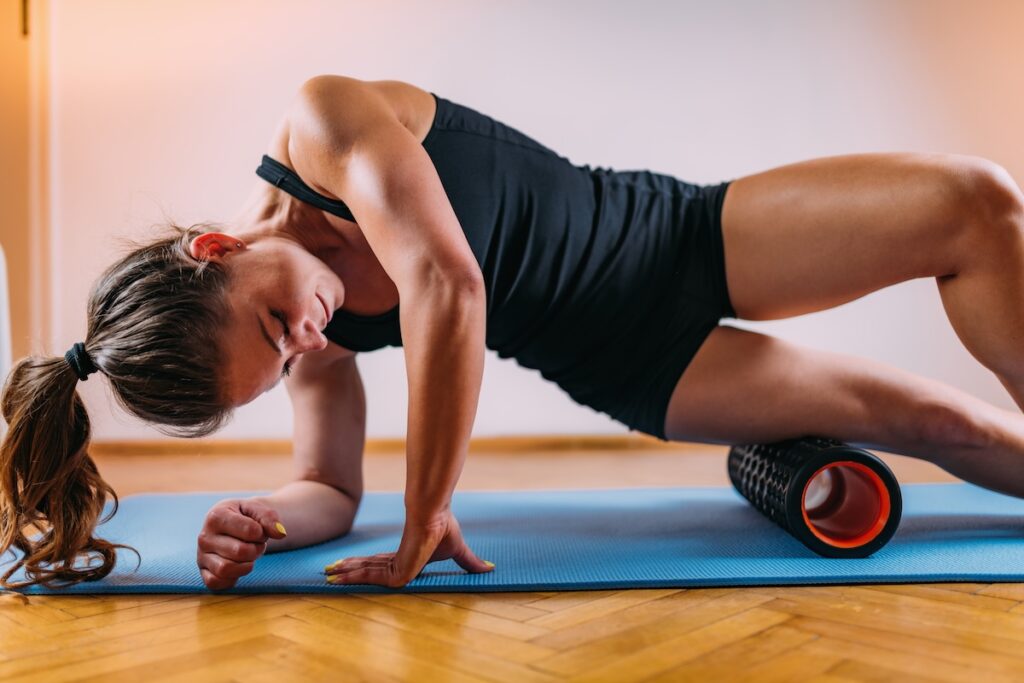
Here’s a simple foam rolling workout you can do in your warm-up routine:
Target Areas: Quads, Hamstrings, Adductors, Low Back, T-spine
- Quads: Lie face down and place the foam roller under your thighs. Roll forward and backward from your hip to just above your knee using your forearms. Spend 30 seconds on each leg, pausing on any particularly sore spots.
- Hamstrings: Sit with extended legs and place the foam roller under your thighs. Support yourself with your hands behind you as you roll from the back of your knees to just under your buttocks. Again, spend about 30 seconds focusing on each hamstring.
- Adductors: Position yourself on your stomach with one leg on the foam roller bent at a 90-degree angle. Roll from the inner thigh up to near the pelvic area. This move targets the often-neglected adductor muscles.
- Low Back: Sit on the ground and place the foam roller behind you under your lower back. Support your head with your hands and gently roll back and forth across the lower back area, being careful not to strain your spine.
- T-Spine: Lay on your back with the foam roller under your upper back. Cross your arms over your chest or place them behind your head to support your neck. Lift your hips slightly off the ground and gently roll from your mid to upper back, focusing on the thoracic spine, which is crucial for upper body mobility.
Each area should be rolled for approximately 30 seconds to 1 minute before moving on to the next.
Dynamic Warm-Up Exercises
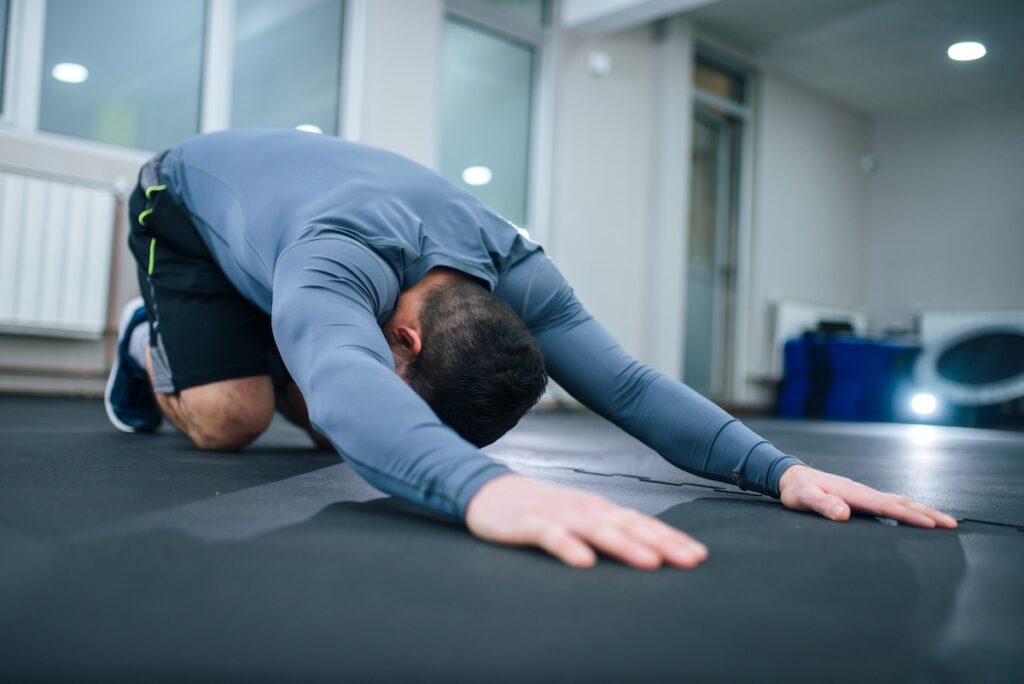
Immediately after foam rolling, we move to dynamic warm-up exercises designed to prepare the body for physical activity by increasing heart rate, enhancing blood flow to muscles, and improving flexibility and joint mobility.
Each exercise should be performed for approximately 30 seconds to 1 minute before moving on to the next.
Resisted Rocking with Neck Mobility
This exercise involves gentle rocking back and forth on the hands and knees while incorporating neck movements to improve flexibility and mobility in the cervical spine.
It helps in loosening the neck, shoulders, and upper back.
V Stance T-Spine Rotation
Starting in a wide-legged stance, bend forward at the hips, placing one hand on the ground for support.
Extend the other arm towards the ceiling while rotating your thoracic spine (upper back).
This movement targets the rotational mobility of the T-spine, which is crucial for overhead activities and rotational sports.
Lizard Lunge Overhead Hip Opener
Begin in a lunge position with one foot forward and hands on the ground.
Lift the inside hand and reach it overhead towards the back, creating a deep stretch through the hip flexors and engaging the core.
This exercise is excellent for opening up the hips and enhancing hip mobility.
Glute Bridge with Breathing Focus
Lie on your back with your knees bent and feet flat on the ground.
Lift your hips towards the ceiling, forming a straight line from your knees to your shoulders.
Focus on deep breathing while holding the bridge position to help improve core stability and strengthen the lower back and glutes.
Activation Exercises
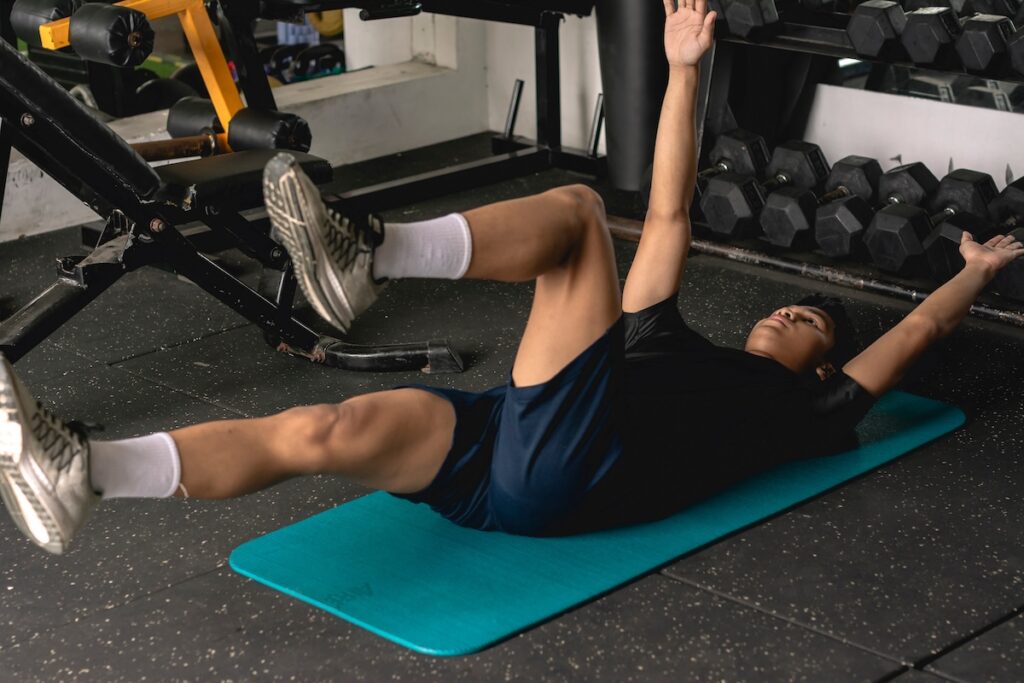
Activation exercises are critical for preparing the muscles for more strenuous activities.
How to Perform
Perform this routine once continuously, moving from one exercise to another without resting.
Focus on controlled movements and proper form throughout each exercise.
Floor Slide with Breathing
This exercise involves lying on your back with arms in a “W” position and sliding them up over your head while keeping them flat on the floor.
- Position: Lie on your back on a flat surface, knees bent, and feet flat on the ground. Place your arms in a “W” shape at your sides.
- Action: Slowly slide your arms above your head, keeping them flat on the floor.
- Breathing: Take 3 to 5 deep breaths. Inhale as you slide your arms up, and exhale as you return them to the starting position.
- Repetitions: Complete the arm slides synchronized with your breathing for 3 to 5 breath cycles.
Syncing these movements with controlled breathing helps activate the shoulder and upper back muscles and improves thoracic mobility.
Band Resisted Dead Bugs
- Position: Lie on your back with knees raised to 90 degrees and hands extended towards the ceiling, holding a resistance band stretched between your hands.
- Action: Simultaneously extend your right leg and lower your left arm behind your head, keeping the band taut. Return to the starting position and switch sides.
- Repetitions: Perform three reps on each side, alternating smoothly.
Holding a resistance band with your hands and extending your opposite arm and leg, the band-resisted dead bugs exercise focuses on core activation.
This movement challenges stability and coordination, engaging the deep core muscles to stabilize the spine during alternating limb movements.
KB Shin Box
- Position: Sit on the floor with your legs at 90-degree angles, with the left leg in front and the right leg to the side. Hold a kettlebell at chest level.
- Action: Lift your knees and rotate them to the opposite side, transitioning your right leg to the front and the left to the side.
- Repetitions: Perform three reps on each side, maintaining a steady pace and controlled movements.
The KB (Kettlebell) Shin Box exercise focuses on activating the glutes and hip rotators.
Sitting with legs at 90-degree angles, alternating the knees from side to side with a kettlebell at chest level, helps improve hip mobility and stability, preparing the lower body for dynamic actions.
Remember, the goal of the activation round is to engage and activate your muscles effectively, preparing them for more intense physical activity.
Keep the transitions smooth and maintain focus on your form and breathing.
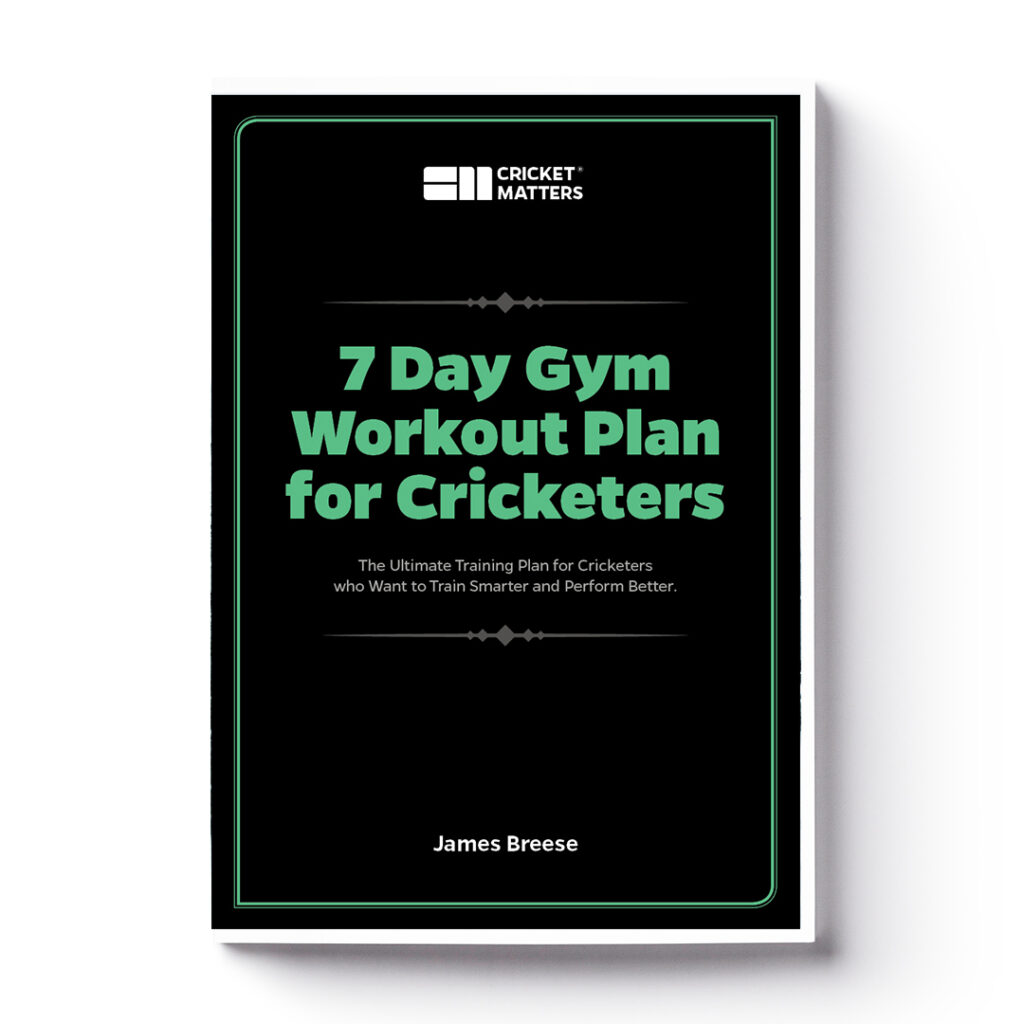
Have You Downloaded Our FREE 7-Day Gym Workout Plan?
Grab your complete step-by-step 7-day gym workout plan for cricketers today. There will be no more Guesswork. Just follow the plan and get results.
The Main Workout
Power Work
We put power work at the start of workouts after warm-up and activation exercises because muscles and the nervous system are freshest at this stage, allowing maximum explosive performance while reducing the risk of injury.
These exercises aim to increase your speed and strength, significantly improving your athletic ability as a cricketer.
1. Box Jump or Jump Squat (Low Box 6 or 12 Inch)
Purpose:
The Box Jump or Jump Squat is a plyometric exercise designed to build explosive lower-body power, which is crucial for accelerating, changing direction quickly, and enhancing agility on the field.
Instructions:
- Setup:
- For the Box Jump, position yourself in front of a sturdy, stable box or platform that’s 6 to 12 inches high.
- Stand with feet shoulder-width apart if no box is available for the Jump Squat.
- Movement:
- Lower into a quarter-squat position, driving your hips back while keeping your chest up.
- Swing your arms back for momentum.
- Explode upwards, jumping onto the box or vertically in the case of the Jump Squat.
- Land softly with your knees slightly bent and step back down for the next rep (or reset for the Jump Squat).
- Tips:
- Maintain proper form throughout, keeping your knees aligned with your toes.
- Focus on a soft landing to reduce the impact on your joints.
- Perform 3 sets of 5 reps with 2 minutes rest between each set.
Benefits:
Incorporating this plyometric movement improves muscle power and coordination, helping cricketers generate explosive bursts, whether sprinting between wickets, diving for catches, or delivering powerful hits.
2. Med Ball Overhead Slams
Purpose:
Med Ball Overhead Slams are an excellent exercise for developing explosive power in the core, shoulders, and upper body.
This movement simulates the powerful rotational and overhead motions used in cricket for batting, bowling, and fielding.
Instructions:
- Setup:
- Stand with feet shoulder-width apart, holding a medicine ball with both hands.
- Raise the ball overhead, fully extending your arms.
- Movement:
- Engage your core and use your hips to generate force as you bring the ball down powerfully.
- Slam the ball into the ground directly before you, bending slightly at the knees to maximize power.
- Pick up the ball, reset to the starting position, and repeat.
- Tips:
- Maintain a strong core throughout the movement to protect your lower back.
- Focus on a controlled, explosive motion, engaging the whole body.
- Perform 3 sets of 10 reps with 2 minutes rest between sets.
Benefits:
Med Ball Overhead Slams enhance overall core strength and upper body power, improving batting power, throwing, and bowling performance on the cricket field.
Sprint Work
We sprint after power work because the muscles are primed for explosive activity.
This allows athletes to convert their developed power into maximal speed and acceleration, which is crucial for sprinting quickly between the wickets and being faster in the field.
3. Sprints: 10 Meter Dash
- Description: Enhances acceleration and explosive starting speed, crucial for many sports.
- Execution: Use acceleration ladders or wickets to set up your sprinting path. Position yourself at the starting line in a ready stance. On your mark, explode forward and sprint through the 10 meters as fast as possible, focusing on quick, powerful strides.
- Repetitions: Perform three sprints, allowing full recovery between each to maintain maximum effort and speed.
Incorporate these sprints into your main workout for power to improve your quickness and explosive power off the start.
Strength Superset #1
Purpose:
This superset pairs the DB Suitcase Jumps with the Side Plank Row to challenge lower and upper body strength while engaging the core.
By alternating between explosive and stabilizing movements, cricketers can improve overall power and core control.
4a. DB Suitcase Jumps
- Stand with feet shoulder-width apart, holding a dumbbell in one hand at your side like a suitcase.
- Lower into a quarter squat, keeping your core tight.
- Explode upward, jumping as high as possible while maintaining good form.
- Land softly and reset, repeating for 5 reps before switching to the other hand for the next set.
4b. Dumbell Side Plank Rotations
- Assume a side plank position with your bottom elbow directly beneath your shoulder.
- Hold a dumbbell in your top hand and row it upward, keeping your body aligned and your core engaged.
- Lower the dumbbell back to the starting position and repeat for 8-10 reps on one side before switching to the other side.
Benefits:
Combining these exercises in a superset helps maximize efficiency by training explosive power and core stability.
The DB Suitcase Jumps improve unilateral leg strength and control, while the dumbbell side plank rotations enhance upper body, shoulder and core stability, all crucial for cricketing performance.
Strength Superset #2
Purpose:
This superset includes the Counter Balance Skater Squat and TRX Rows to build unilateral leg strength, balance, and upper body pulling power.
5a. Counter Balance Skater Squat
- Stand on one leg while holding a weight or counterbalance in front of your body.
- Lower your hips back and down, extending your free leg behind you like a skater.
- Descend until your knee is nearly at a right angle, then push through your standing leg to return to the starting position.
- Repeat for 8 reps on one leg before switching to the other.
5b. TRX Rows
- Hold the TRX handles with your palms facing each other and lean back with your feet anchored on the ground.
- Keep your body aligned and pull yourself up by bending your elbows and squeezing your shoulder blades together.
- Lower back down with control and repeat for 8-10 reps per set.
Benefits:
This superset challenges balance and pulling power, which are crucial for fielding and general agility.
The Counter Balance Skater Squat enhances unilateral leg strength and control, while TRX Rows develop upper body strength and core stability.
Further Reading
Strength Tri-Superset
Purpose:
This tri-superset combines the Dumbbell Single Leg RDL, Press Up, and Swiss Ball Band Rotations to enhance balance, core stability, and upper body strength.
These exercises target the key muscle groups for powerful ball striking, fast bowling, and athletic fielding.
6a. Dumbbell Single Leg RDL
- Stand on one leg, holding a dumbbell in the opposite hand.
- Engage your core and hinge at the hips, lowering the dumbbell toward the ground while extending your free leg behind.
- Contract your glutes and hamstrings to return to the starting position.
- Repeat for 8 reps before switching to the other side.
6b. Press Up
- Get into a push-up position with your hands slightly wider than shoulder-width apart and core engaged.
- Lower your body until your chest almost touches the ground, then push back to the starting position.
- For an added challenge, elevate your feet on a bench or platform.
6c. Swiss Ball Band Rotations
- Sit on a Swiss ball with a resistance band attached to a stable anchor point to your side.
- Hold the band with both hands and rotate your torso sideways, keeping your arms extended and hips facing forward.
- Return to the centre with control and repeat for 8-10 reps per side.
Benefits:
This tri-superset effectively develops the balance, strength, and rotational power needed for cricket.
The Dumbbell Single Leg RDL targets unilateral strength, the Press Up builds upper body and core power, and the Swiss Ball Band Rotations develop rotational power for hitting, throwing, and fielding.
Conditioning: Tempo Runs
Purpose:
Tempo runs enhance aerobic capacity and improve sprint mechanics, promoting efficient recovery between fast springs (think running between the wickets or chasing the ball to the boundary).
This is going to help you build speed endurance.
Instructions:
- Setup:
- Set up two cones 22 yards apart to mimic a cricket pitch.
- Leave 10 yards of space beyond the second cone to safely decelerate.
- Execution:
- Run from the first cone to the second at 70-80% of your maximum speed.
- Decelerate safely in the 10-yard space past the second cone.
- Walk back to the starting cone to recover between runs.
- Repetitions:
- Repeat the tempo runs for 8-10 minutes, ensuring each run is consistent in intensity.
Benefits:
Tempo runs enhance cardiovascular conditioning and replicate cricket-specific sprinting demands.
They also build an efficient rhythm of exertion and recovery, enabling players to maintain speed and agility during sustained matches.
The Cool Down
The cool-down is designed to gradually reduce heart rate and muscle temperature while incorporating stretching to relieve muscle stiffness and enhance flexibility.
Proper cool-down and stretching help transition your body into a state of recovery and can prevent injury.
This is very important for cricketers, and we don’t do enough of it.
Diaphragmatic Breathing
- Position: Lie on your back or sit comfortably with one hand on your belly and the other on your chest.
- Action: Inhale deeply through your nose, allowing your belly to rise more than your chest. Exhale slowly through pursed lips, engaging your core to ensure complete exhalation.
- Duration: Spend 2-3 minutes performing this breathing exercise to initiate recovery.
Stretches
Focus on two effective stretches that target major muscle groups used during the workout.
Hold each stretch for 2 minutes for deep muscle relaxation and lengthening.
Standing Hamstring Stretch (for hamstrings and lower back)
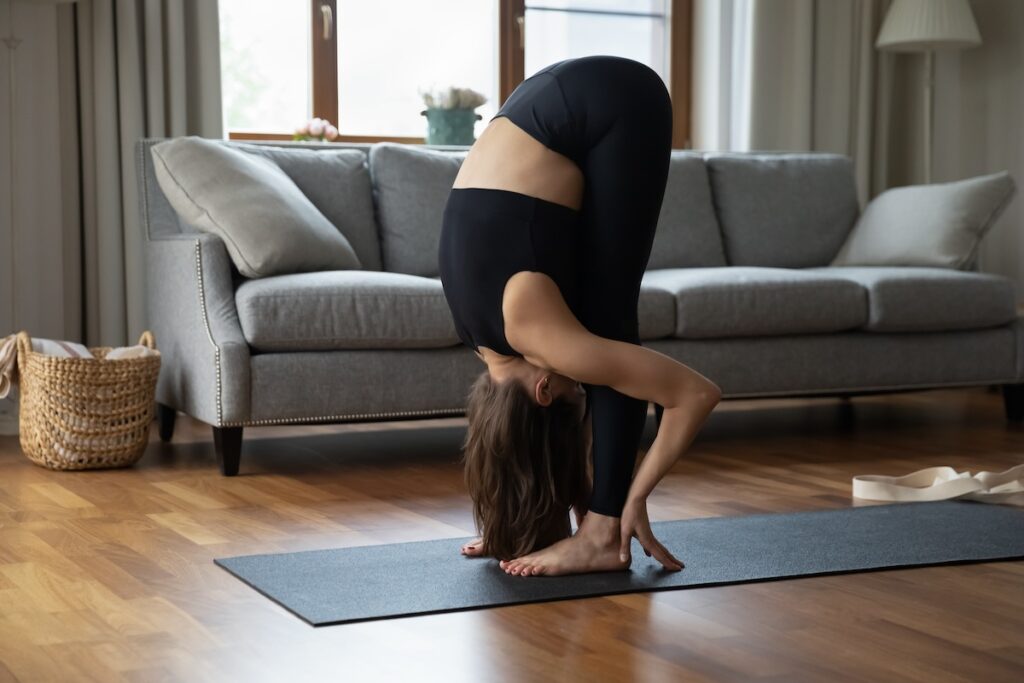
- Position: Stand with feet hip-width apart, extending one leg forward with the heel on the ground and toes pointed up.
- Execution: Bend the supporting knee slightly and hinge at the hips to reach toward the toes of the extended leg, keeping your back straight. Focus on deep breathing while holding the stretch.
- Duration: Hold for 2 minutes on each leg, allowing the hamstrings and lower back muscles to relax and lengthen.
Child’s Pose with Side Stretch (for back, shoulders, and obliques)
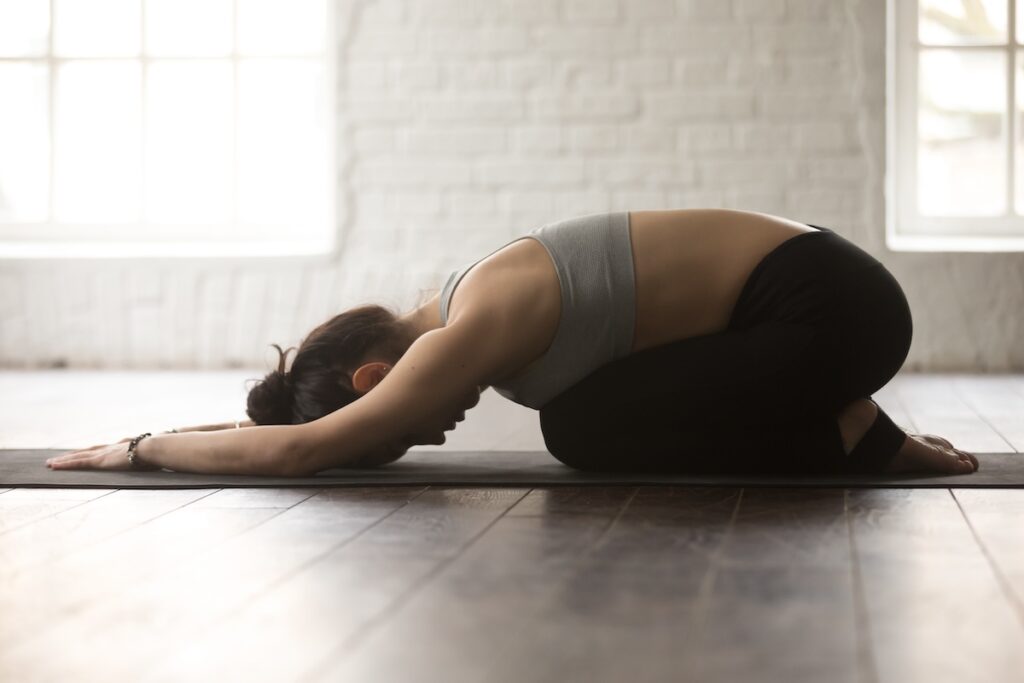
- Position: Start kneeling, sitting back on your heels with arms extended forward on the floor.
- Execution: Lower your chest toward the ground and extend your hands to one side to stretch the side body. Hold and breathe deeply before switching to the other side.
- Duration: Hold for 2 minutes on each side to stretch and relax the back, shoulders, and obliques.
Skipping the cool-down can increase stiffness and soreness, reduce joint range of motion, and increase the risk of injuries.
As cricketers, we’re already injury-prone enough, so don’t skip this.
Ensure you dedicate adequate time to cool down properly after every workout.
Final Thoughts
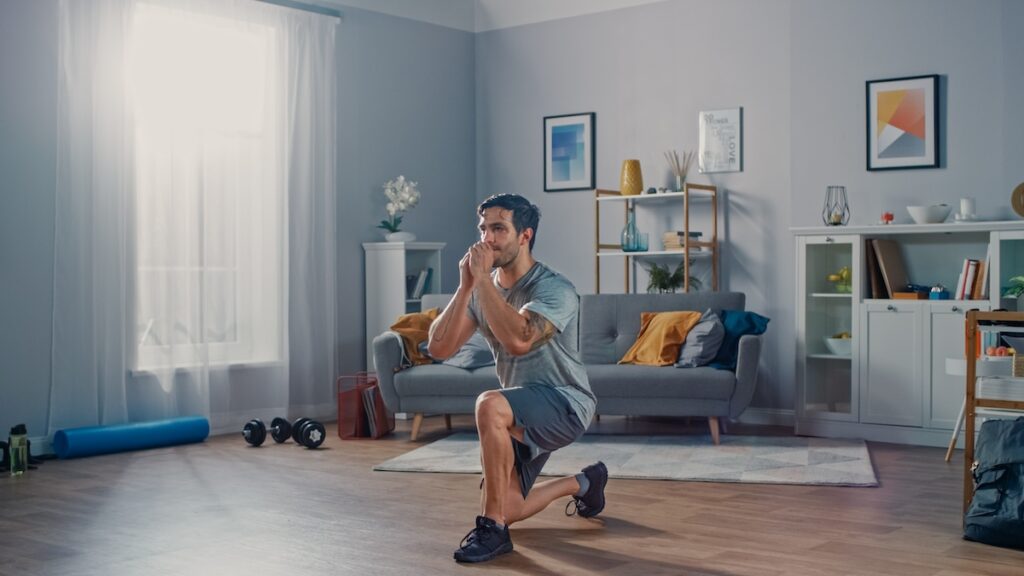
This ultimate home workout for cricketers is designed to improve athletic performance by incorporating power work, speed training, and strength exercises into a comprehensive conditioning routine.
By focusing on explosive movements, unilateral strength, and rotational power, this workout enhances key areas like agility, acceleration, and endurance, which are essential for cricket-specific performance.
Each exercise builds upon the previous one to ensure well-rounded development while promoting balanced physical fitness and injury prevention.
The cool-down stretches help your muscles recover and prevent soreness, ensuring you’re ready for the next session.
Consistent effort will substantially improve your strength, coordination, and on-field athleticism.
Remember, progress takes time and dedication. Commit to this routine, and you will see marked improvements in speed, power, and health.
Feel free to book a strategy call with our team if you need guidance.
Let me know how you progress with this workout.
Further Reading
FAQs
How Often Should Cricketers Do a Home Workout for Optimal Results?
To achieve optimal results, cricketers should follow a balanced workout routine incorporating strength, agility, and conditioning exercises. Strength training should be done 2-3 times weekly, focusing on upper and lower body exercises to develop muscle strength.
Power and speed work should be included 1-2 times per week, emphasizing plyometric exercises, sprints, and agility drills. Cardio and conditioning should be performed twice a week through high-intensity interval training (HIIT) or steady-state cardio to improve stamina.
Stretching and mobility exercises should be practiced daily to enhance flexibility and speed up recovery. Ensure sufficient rest days between intense workout sessions to prevent overtraining and allow muscles time to recover.
Are Bodyweight Exercises Effective for Improving Cricket-Specific Performance?
Bodyweight exercises can improve cricket-specific performance because they target the functional movements required in the game.
Exercises like lunges, planks, and push-ups mimic cricket actions, helping cricketers develop strength and agility. Mountain climbers and leg raises strengthen the core, vital for rotational power in batting and bowling.
Plyometric drills and sprints help increase agility and speed, which are crucial for sprinting between wickets and fielding. Single-leg exercises like step-ups and split squats build balance and stability, contributing to accurate throws and a stable batting stance.
Players can significantly enhance their fitness and performance by integrating various bodyweight exercises that focus on cricket-specific movements.
What Conditioning Drills Can Cricketers Include in a Home Workout?
Cricketers can improve their endurance and speed by including conditioning drills in their home workouts. Interval sprints, which alternate between short bursts of maximum speed and slower recovery jogs, can effectively increase speed and cardiovascular endurance.
Shadow running, mimicking game situations by sprinting back and forth over a 22-yard distance, is excellent for practising running between wickets. If an agility ladder is available, agility ladder drills, such as lateral shuffles, high knees, and crossover steps, enhance footwork and coordination.
Tempo runs, where cricketers run at 70-80% of their maximum speed over longer distances, help build endurance. At the same time, burpee intervals can be used to maintain high-intensity performance with a short rest period.
By including these conditioning drills, cricketers will develop the stamina, agility, and quickness required for optimal performance on the field.

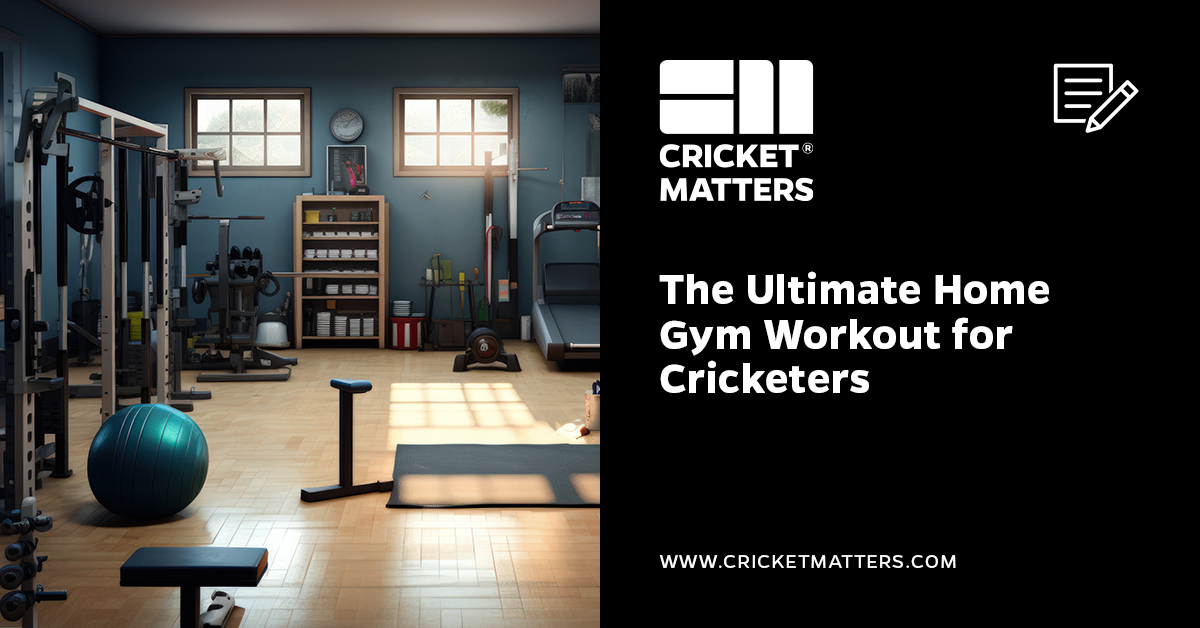
![[Case Study] Advanced Hiit Training Plan for Cricketers 4 Hiit Training for Cricketers](https://www.cricketmatters.com/wp-content/uploads/2024/04/HIIT_Training-1024x536.png)
